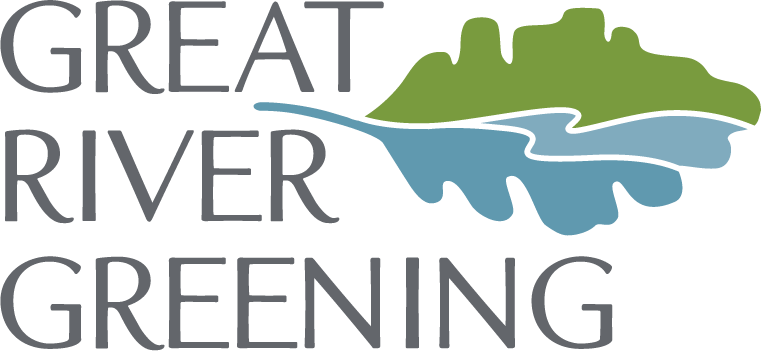Help Minnesota’s Pollinators
What’s up with Minnesota’s pollinators?
Although critical to maintaining healthy ecosystems, a strong economy and a robust food supply chain, pollinator populations across our state are rapidly decreasing. Year over year, researchers report fewer species and numbers of pollinating insects, ultimately threatening our quality of life.
Reasons for pollinator decline include climate change, parasites, insecticides, and habitat loss. Current urban corridors, for example, are largely undeveloped habitat for pollinators, often with open mowed turf serving as boundaries between pavement and other impermeable surfaces. These fragmented, homogeneous corridors make it nearly impossible for pollinators to locate reliable food and nesting.
Great River Greening’s Approach
Alongside our volunteers, Great River Greening restores more than 1,000 acres of pollinator habitat each year. This includes planting native wildflowers and grasses, removing invasive plants that threaten delicate ecosystems, and building diverse corridors to sustain pollinators as they migrate.
Through the help of volunteers and the public, our team strengthens critical habitat and constantly evolves our restoration efforts to best help pollinating insects.
You can help.
In partnership with the Xerces Society and University of Minnesota Extension Bee Lab, Great River Greening is hosting pollinator identification trainings and stewardship events to support our pollinating friends.
As part of the events, you’ll learn how to safely capture bumble bees for professionals to identify, in addition to learning identification techniques to use on your own. Minnesota is home to thousands of pollinator species, so you can expect to find bumble bees, butterflies, honeybees, moths, flies, and beetles out in the field.
Using the data YOU collect, our team of ecologists can better understand the relationship between habitat types/flower species and pollinator populations. For example, we can identify which bee species thrive in prairies vs. turf lawn, and build future restoration plans to support specific types of pollinators.
Join our mission.
Interested in helping out? Visit our Volunteer Events Page and register for a pollinator identification training and/or stewardship event this spring. These events are family-friendly and open to volunteers of all ages, but they fill up quickly. Reserve your spot today.
Check out our partner pages for more information about native pollinators:
· https://www.xerces.org/pollinator-conservation/about-pollinators
· https://beelab.umn.edu/bumble-bees
· https://www.dnr.state.mn.us/pollinators/index.html
Many thanks to our funders and partners who make this work possible:
Environment and Natural Resources Trust Fund (LCCMR)
National Fish and Wildlife Foundation (NFWF)
University of Minnesota Extension Bee Lab
Xerces Society
City of Lakeville
Scott County
Three Rivers Park District
Many other landowners who collaborate on our Pollinator Central projects
